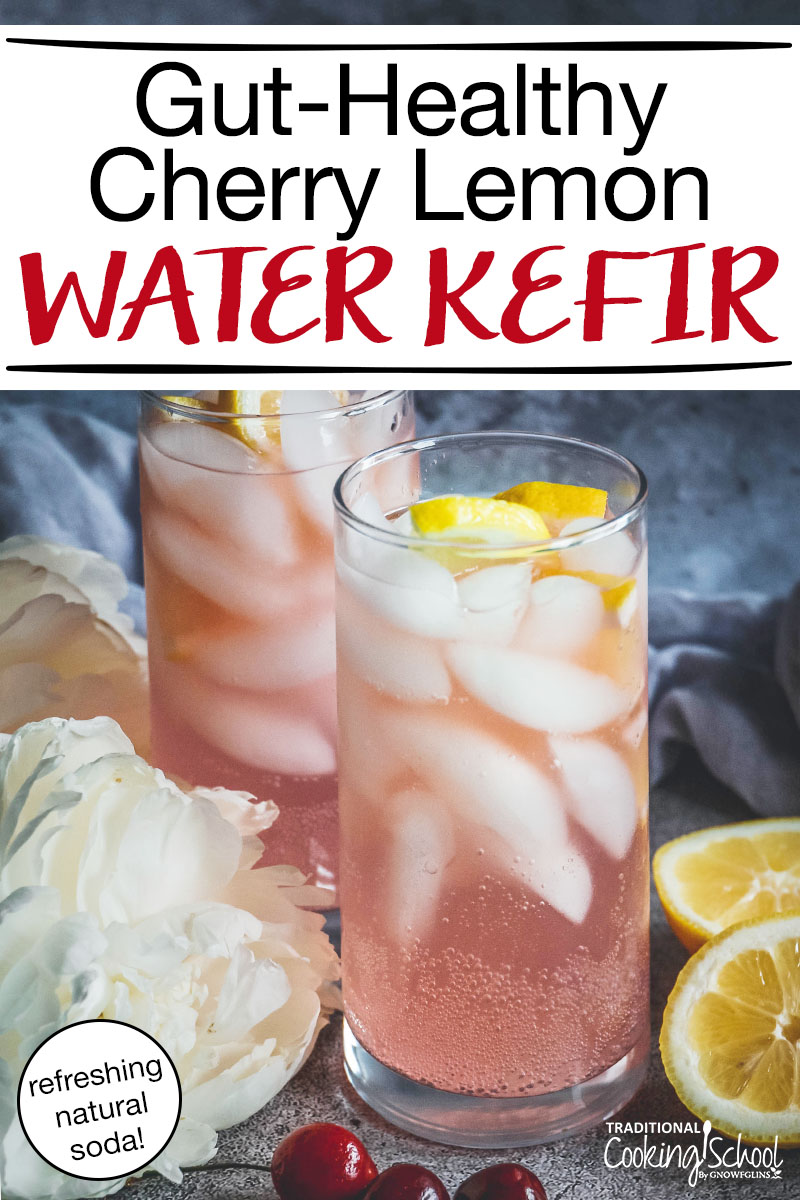
Oh water kefir, where to start? I guess with the beginning…
I grew up eating fermented foods, and I mean a lot of fermented foods.
Does any Romanian household ever lack the coveted Borscht or jars upon jars of fermented vegetables? My grandparents used to have them stacked in every free spot of the kitchen during the winter months.
Needless to say, I’ve had a taste for all things fermented for as long as I can remember.
So you can imagine my sheer exhilaration when I learned about water kefir — a bubbly probiotic drink that’s low in sugar, gut healthy, and tastes amazing!
Water Kefir For Gut Health
When I started on my health journey, I had one goal and one goal only: to heal my gut.
I did this by eliminating all trigger foods and adding in probiotic-rich foods and drinks. I found that repopulating the gut with essential bacteria was the deciding factor for my healing.
If you’re not the type who can open a jar of sauerkraut and eat several forkfuls without a second thought, or the type who can down a bottle of kombucha in minutes flat, I’ve got a solution for you… gut-healthy cherry lemon water kefir!
So, What Is Water Kefir?
According to Wikipedia…
“Water kefir is a traditional fermented drink made with water and a symbiotic culture of bacteria and yeasts (SCOBY) held in a polysaccharide biofilm matrix created by the bacteria.”
In simpler terms, when you combine beneficial bacteria and sugar water, it ferments, producing a bubbly, delicious probiotic-rich natural soda known as water kefir.
Although many fermented foods call for whey or some other cultured dairy product to kickstart fermentation, water kefir is dairy-free!
Water kefir can be consumed plain once it’s fermented or you can get creative with adding fruit such as cherries and lemon, for a second fermentation. This is typically where people feel a bit reticent and believe the process to be difficult.
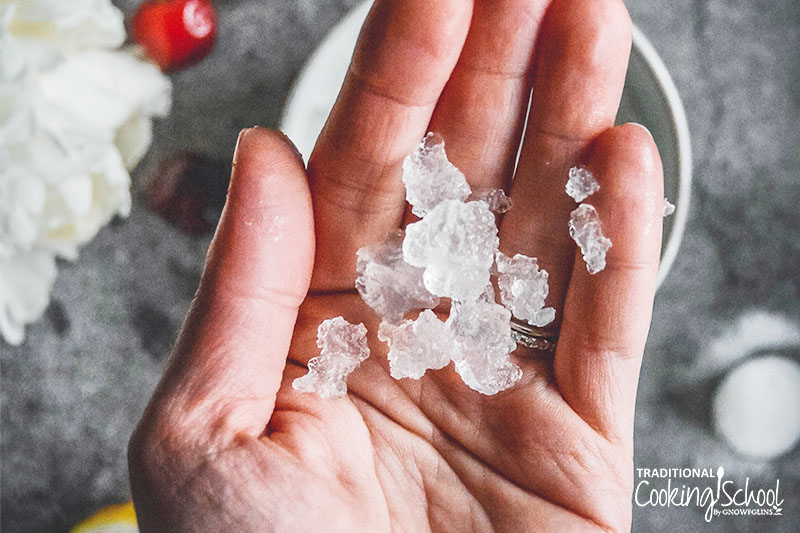
Where To Find Water Kefir Grains?
The most important thing when making water kefir is obviously the water kefir grains.
I couldn’t source water kefir grains locally, so I bought them online from a seller in Florida. I highly recommend them! They arrived sealed in a mixture of sugar water, and have to be placed in sugar water right away.
Wardee recommends these water kefir grains from Cultures for Health.
Help! Fermenting Is Intimidating!
I get it — you’re not a fermenting expert and worry that you won’t be able to pull it off.
All I have to say to that is… If I can do it, you 100%, absolutely, positively can do it!
The only thing about making water kefir is that it’s a long term commitment. You have to be willing to give your grains love and care.
By that I mean spending five minutes every two days giving your grains fresh water.
How To Make This Refreshing Natural Soda
Now that you’ve got your grains, you need sugar and room temperature spring water.
I cannot stress enough the importance of spring water. Using filtered or tap water is not going to give you the best water kefir, as it can alter the taste.
Water kefir grains like the purest water possible straight from the earth (or earth then bottle).
It may take one batch of kefir (or two or more!) for the grains to really come into their own.
They quickly adapt to their new environment but like all living things, they need a little time. Be patient and know that you may not get a super bubbly result right away.
Water Kefir Grains Grow?
The cool thing about water kefir grains is that they grow.
If they love their new environment, they will let you know. In a few months, you may have to separate the grains and make two batches, or give one away, etc.
My starting batch of 1/4 cup water kefir grains doubled in size in two to three months!
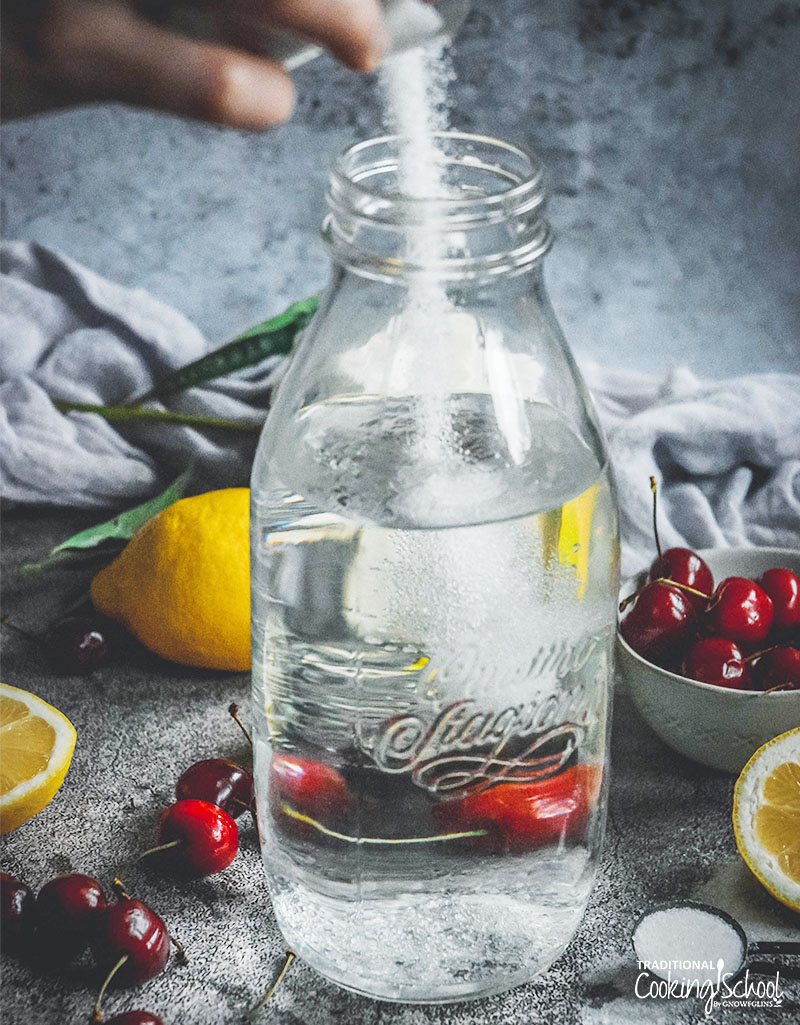
Sweetening Your Water Kefir
This is probably the only time I will ever say this as it doesn’t apply to anything else in my life: white sugar is best.
Not for you — for the water kefir grains!
Coconut sugar, brown sugar, and unrefined cane sugar (Rapadura or Sucanat) all work, but do yield a different flavor. I prefer to let the fruit do the flavoring and the sugar be food for the water kefir grains.
I’ve found that using white sugar consistently keeps my grains healthy and growing. However, some people may find that their grains grow best when fed less-refined sweeteners such as Rapadura due to the extra minerals.
If you’d rather not use white sugar but you want a sweetener with minimal taste, evaporated cane juice is another good option.
Feel free to explore and experiment!
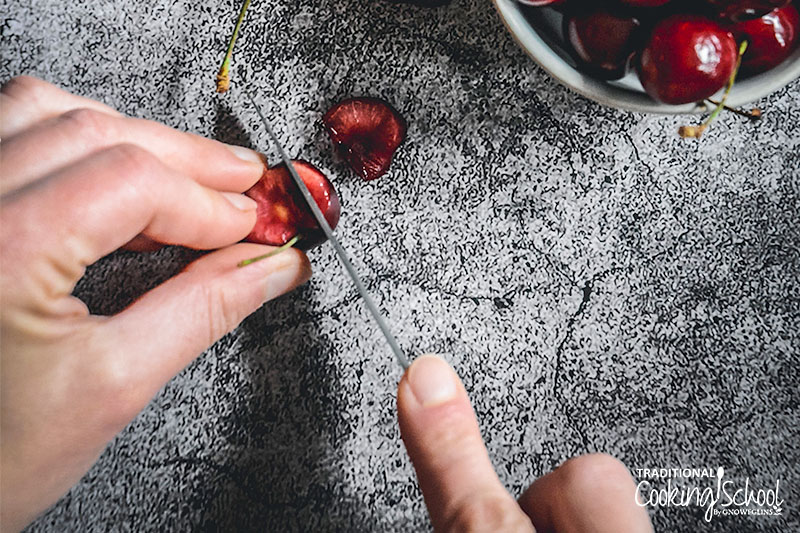
Second Fermentation: Flavoring & Bottling!
This is my favorite part of the process, the second fermentation.
All this means is that you add some cut up cherries, a little lemon juice, a little sugar, and a tiny bit of lemon zest. Then you let time work its magic.
In two days you will find yourself with a bubbly, delicious probiotic drink that’s sure to satisfy everyone in your family.
I find the combination of cherries, lemon juice, and zest give the water kefir an almost floral quality which is perfect for summer.
I like to serve it over ice with lemon slices. It is the quintessential summer (or any time of year!) drink.
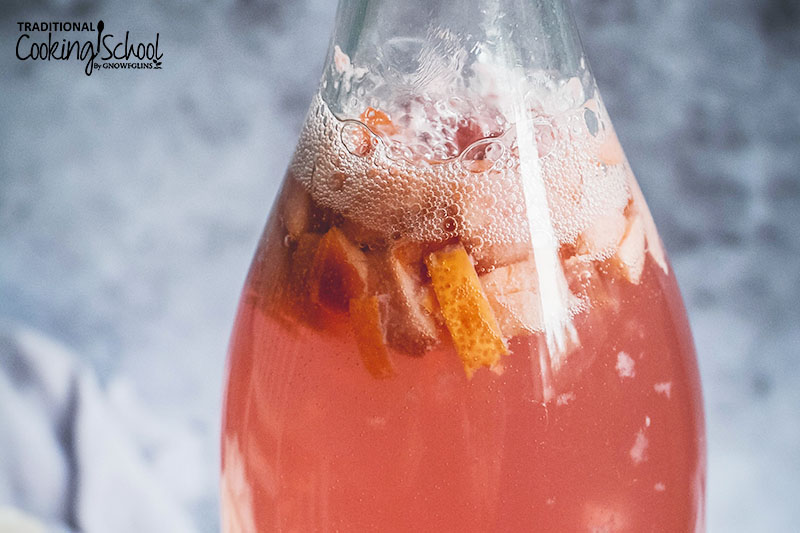
What Container To Use For Fermenting?
That is an excellent question and probably the most important one.
Glass, glass, glass. Don’t use metal or plastic.
The water kefir grains are happiest in glass. Storing them in metal will hurt the grains, and the same goes for plastic.
Side note: It is perfectly fine to use a metal strainer — I’ve been using it for years.
During first fermentation, I prefer a large wide-mouth bottle so I can easily add and remove grains. You can also use a large Mason jar. For second fermentation, I recommend flip-top bottles so you achieve the most bubbly, best water kefir.
Now let’s get in the kitchen and make water kefir!
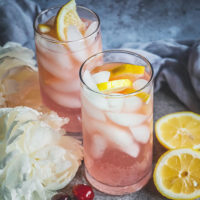
Cherry Lemon Water Kefir Recipe
What is water kefir??? Oh, just a bubbly, probiotic drink that's similar to kombucha, low in sugar, gut healthy, and tastes like soda would if it were homemade and good-for-you! This cherry lemon water kefir recipe is perfect for beginners because it's super simple, yet you'll still learn how to do a second ferment for best flavor. You and your kids will love it so much you'll want to keep water kefir grains on hand... forever. 😉
Ingredients
For the first fermentation:
- 1/4 cup water kefir grains
- 4 cups pure water room temperature (I recommend spring water)
- 1/4 cup evaporated cane juice or other crystalline sweetener such as coconut sugar or Rapadura
For the second fermentation (flavoring):
- 8 cherries pitted and cut into pieces
- 1/4 teaspoon lemon peel finely sliced
- 1 teaspoon evaporated cane juice or other crystalline sweetener such as coconut sugar or Rapadura
- 2 teaspoons lemon juice
Instructions
-
Combine 4 cups water and 1/4 cup sugar in a wide-mouthed bottle. Stir well.
-
Add water kefir grains.
-
Cover bottle with a cloth and secure with a rubber band to prevent dust and bugs from entering.
-
Let ferment at room temperature for 48 hours.
-
Once fermented, strain water kefir into a flip-top bottle. Reserve the grains.
-
Add cherries, lemon peel, 1 teaspoon sugar, and lemon juice.
-
Close flip-top bottle and let ferment at room temperature for 1 to 2 days, depending on how bubbly you want it. After 2 days, store water kefir in the refrigerator for up to 1 to 2 weeks.
-
Meanwhile, wash out wide-mouth bottle with soap and water.
-
Begin process again by combining water, sugar, and grains.
-
When your kefir grains outgrow their space, just make two batches and repeat the process! Enjoy!
For more kefir information, check out How To Make Water Kefir, What’s So Great About Water Kefir?, and How to Make Coconut Kefir {3 Ways}.
I love to drink water kefir, and I hope you will too! What is your favorite fermented beverage flavor?
...without giving up the foods you love or spending all day in the kitchen!

2 free books:
Eat God's Way
Ditch the Standard American Diet, get healthier & happier, and save money on groceries...
We only recommend products and services we wholeheartedly endorse. This post may contain special links through which we earn a small commission if you make a purchase (though your price is the same).


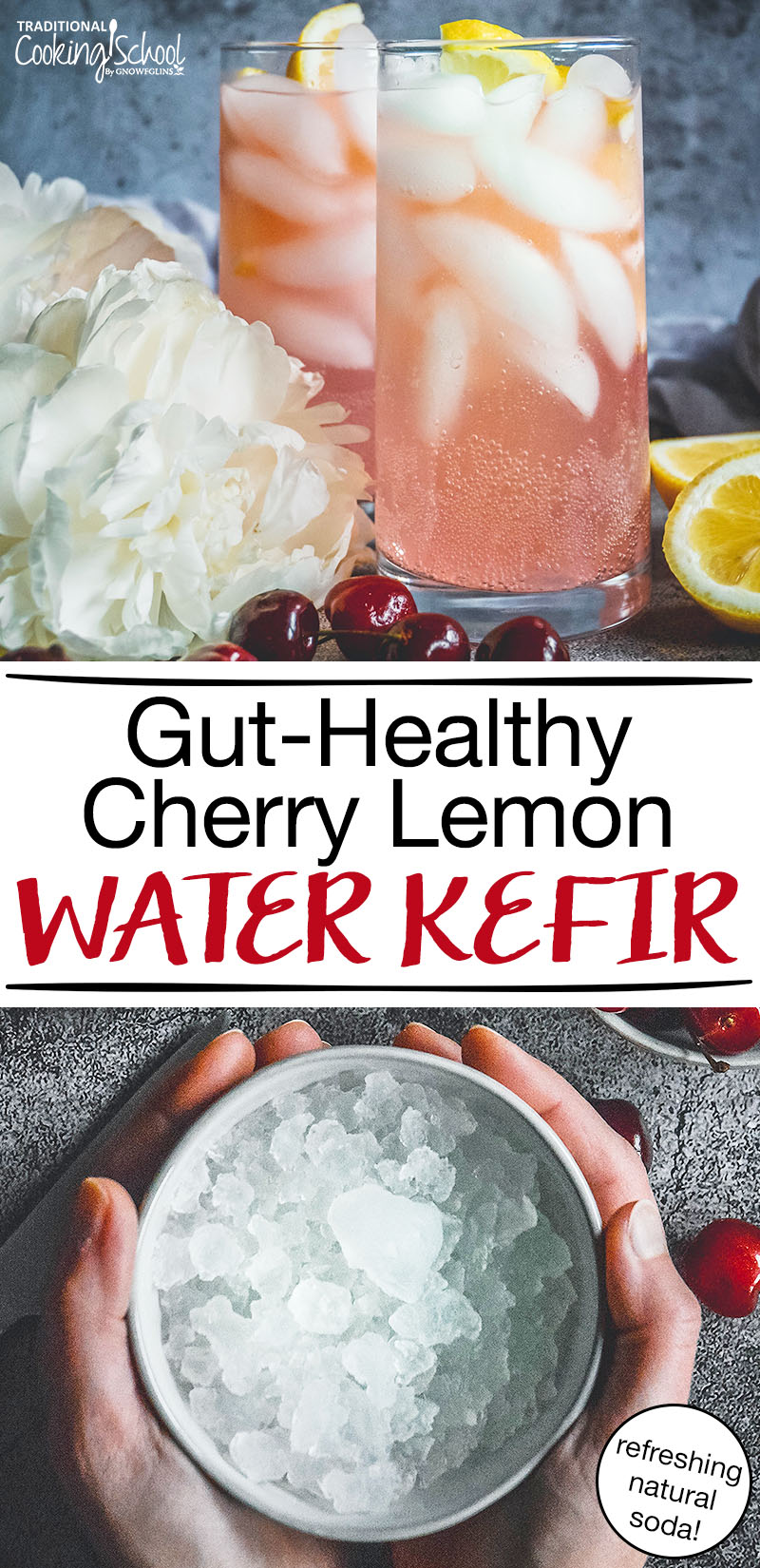
Can you use this recipe with kombucha too?
Hi Mary!
I haven’t tried it but it’s definitely worth exploring with those flavors! I’d be super curious to hear what you think!
I can’t wait to try this cherry/lemon kefir recipe! I was wondering if you could help me with a problem I have with my grains. I have got them from a great source who has them growing all the time, but mine over time slowly dwindle down to almost nothing. I use spring water and organic white sugar. I do almost 2/3 c. sugar to 2 quarts of spring water. Any ideas why my kefir grains will not grow? Thanks!
Awesome Karen! Did you just start out with the grains? Also how many cups do you have for the grains?
Mine did take a few weeks to come into their own once I bought them. I generally keep my batches to 1/4-1/2 cup of grains per quart of water with 5 tbsp of sugar. If the grains get bigger than 1/2 cup, I change them out. Also, are you keeping them away from fluctuating temperatures? And how often do you change the water?
Question? under the second ferment, the ingredient list says to add 1 tsp sugar but the instructions say 1/4 tsp sugar. Which is correct?
Hi Janet,
Definitely stick with the tsp evaporated cane juice or coconut sugar! We want to stick with the natural sweeteners!
Hi Daniela,
In the blog post above the recipe you say you prefer white sugar. But in the recipe you say to use 1/4 cup evaporated cane juice or other crystalline sweetener such as coconut sugar or Rapadura for the first ferment and 1 tsp of the same for the second ferment.
Is it okay to use white sugar in those same quantities instead of what you mention in the recipe?
I’m going to get started with water kefir soon and was hoping to use the granulated white sugar I already have on hand.
Hi Robert!
Absolutely fine to use granulated white sugar if that’s what you have! 1/4 cup will work well for the quantity!
Also if this is the first time you’re making it, don’t be surprised if it takes the grains a few batches to get comfortable in their new environment! Every time I’ve gotten fresh grains it took 2-4 batches before it was just right! 🙂
When you say it takes a couple of batches to get right, does that mean the batches in the meantime are bad or just not as good as they can be?